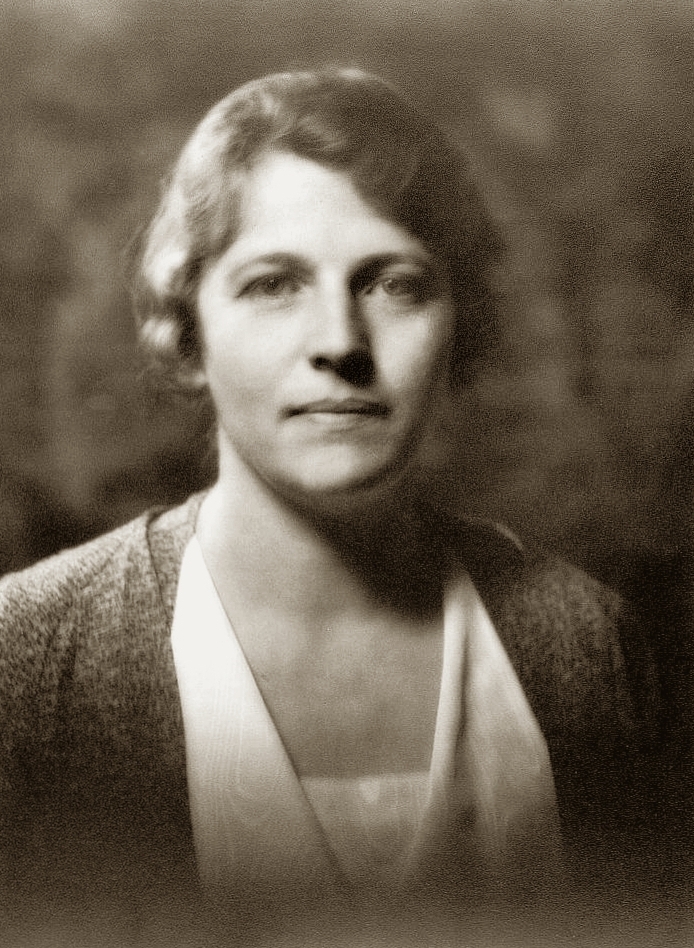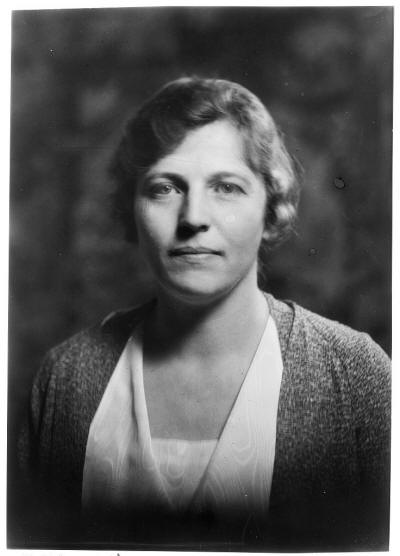Queer Places:
Cornell University (Ivy League), 410 Thurston Ave, Ithaca, NY 14850
8129 Seneca Trail (Route 219), Box 126, Hillsboro, WV 24946
Pearl S. Buck Memorial House, Gulou, Nanjing, Jiangsu, China
Green Hills Farm, 520 Dublin Rd, Perkasie, PA 18944
Danby Village Historic District, Danby, VT 05739
Mountain Haunt, off VT-30, Winhall, VT 05340
Prospect Tower apartments, Apartment 812, 45 Tudor City Pl, New York, NY 10017
 Pearl
Sydenstricker Buck (June 26, 1892 – March 6, 1973; also known by her Chinese
name Sai Zhenzhu) was an American writer and novelist. As the daughter of
missionaries, Buck spent most of her life before 1934 in Zhenjiang, China.
Her novel The Good Earth was the best-selling fiction book in the
United States in 1931 and 1932 and won the Pulitzer Prize in 1932. In 1938,
she was awarded the Nobel Prize in Literature "for her rich and truly epic
descriptions of peasant life in China and for her biographical
masterpieces".[1]
She was the first American woman to win the Nobel Prize for Literature. She
was a friend of Eleanor
Roosevelt, Margaret Mead,
Margaret Sanger and dozens of
other major figures. A feminist whose writings on the situation of educated
American women anticipated ''The Feminine Mystique'' (which she blurbed and
helped promote), she was an energetic supporter of racial equality decades
before the modern civil rights movement and a tireless humanitarian who
adopted seven children and raised millions of dollars for dozens of causes
-- most famously, the adoption and fostering of Amerasian children fathered
and abandoned by American soldiers stationed in the Far East. The very word
''Amerasian'' is her coinage.
Pearl
Sydenstricker Buck (June 26, 1892 – March 6, 1973; also known by her Chinese
name Sai Zhenzhu) was an American writer and novelist. As the daughter of
missionaries, Buck spent most of her life before 1934 in Zhenjiang, China.
Her novel The Good Earth was the best-selling fiction book in the
United States in 1931 and 1932 and won the Pulitzer Prize in 1932. In 1938,
she was awarded the Nobel Prize in Literature "for her rich and truly epic
descriptions of peasant life in China and for her biographical
masterpieces".[1]
She was the first American woman to win the Nobel Prize for Literature. She
was a friend of Eleanor
Roosevelt, Margaret Mead,
Margaret Sanger and dozens of
other major figures. A feminist whose writings on the situation of educated
American women anticipated ''The Feminine Mystique'' (which she blurbed and
helped promote), she was an energetic supporter of racial equality decades
before the modern civil rights movement and a tireless humanitarian who
adopted seven children and raised millions of dollars for dozens of causes
-- most famously, the adoption and fostering of Amerasian children fathered
and abandoned by American soldiers stationed in the Far East. The very word
''Amerasian'' is her coinage.
After returning to the United States in 1935, she continued writing
prolifically, became a prominent advocate of the rights of women and
minority groups, and wrote widely on Chinese and Asian cultures, becoming
particularly well known for her efforts on behalf of Asian and mixed-race
adoption.
Originally named Comfort by her parents,[2]
Pearl Sydenstricker was born in Hillsboro, West Virginia, United States, to
Caroline Maude Stulting (1857–1921) and Absalom Sydenstricker. Her parents,
Southern Presbyterian missionaries, traveled to China soon after their
marriage on July 8, 1880, but returned to the United States for Pearl's
birth. When Pearl was five months old, the family arrived in China, first in
Huai'an and then in 1896 moved to Zhenjiang (then often known as Jingjiang
or, in the Chinese postal romanization system, Tsingkiang), near Nanking.[3]

by
Arnold Genthe
In 1911, Pearl left China to attend Randolph-Macon Woman's College in
Lynchburg, Virginia, graduating Phi Beta Kappa in 1914 and a member of Kappa
Delta Sorority. Although she had not intended to return to China, much less
become a missionary, she quickly applied to the Presbyterian Board when her
father wrote that her mother was seriously ill. From 1914 to 1932, she
served as a Presbyterian missionary, but her views later became highly
controversial during the Fundamentalist–Modernist controversy, leading to
her resignation.[8]
In 1914, Pearl returned to China. She married an agricultural economist
missionary, John Lossing Buck, on May 30, 1917, and they moved to Suzhou,
Anhui Province, a small town on the Huai River (not to be confused with the
better-known Suzhou in Jiangsu Province). This region she describes in her
books The Good Earth and
Sons.
From 1920 to 1933, the Bucks made their home in Nanjing, on the campus of
the University of Nanking, where they both had teaching positions. She
taught English literature at the private, church-run University of Nanking,[9]
Ginling College and at the National Central University. In 1920, the Bucks
had a daughter, Carol, afflicted with phenylketonuria. In 1921, Buck's
mother died of a tropical disease, sprue, and shortly afterward her father
moved in. In 1924, they left China for John Buck's year of sabbatical and
returned to the United States for a short time, during which Pearl Buck
earned her master's degree from Cornell University. In 1925, the Bucks
adopted Janice (later surnamed Walsh). That autumn, they returned to China.[8]
In 1935 the Bucks divorced in Reno, Nevada,[14]
and she married Richard Walsh that same day.[12]
He offered her advice and affection which, her biographer concludes, "helped
make Pearl's prodigious activity possible". The couple lived in Pennsylvania
until his death in 1960.[10]
During the Cultural Revolution, Buck, as a preeminent American writer of
Chinese village life, was denounced as an "American cultural imperialist".[15]
Buck was "heartbroken" when she was prevented from visiting China with
Richard Nixon in 1972. Her 1962 novel Satan Never Sleeps described
the Communist tyranny in China. Following the Communist Revolution in 1949,
Buck was repeatedly refused all attempts to return to her beloved China and
therefore was compelled to remain in the United States for the rest of her
life.[12]
Pearl S. Buck died of lung cancer on March 6, 1973, in Danby, Vermont,
and was interred in Green Hills Farm in Perkasie, Pennsylvania. She designed
her own tombstone. Her name was not inscribed in English on her tombstone.
Instead, the grave marker is inscribed with Chinese characters representing
the name Pearl Sydenstricker.[16]
Buck's former residence at Nanjing University is now the Sai Zhenzhu
Memorial House along the West Wall of the university's north campus. U.S.
President George H. W. Bush toured the Pearl S. Buck House in October 1998.
He expressed that he, like millions of other Americans, had gained an
appreciation for the Chinese people through Buck's writing.[39]
My published books:


BACK TO HOME PAGE

- https://en.wikipedia.org/wiki/Pearl_S._Buck
- http://movies2.nytimes.com/books/98/05/03/nnp/conn-buck.html
 Pearl
Sydenstricker Buck (June 26, 1892 – March 6, 1973; also known by her Chinese
name Sai Zhenzhu) was an American writer and novelist. As the daughter of
missionaries, Buck spent most of her life before 1934 in Zhenjiang, China.
Her novel The Good Earth was the best-selling fiction book in the
United States in 1931 and 1932 and won the Pulitzer Prize in 1932. In 1938,
she was awarded the Nobel Prize in Literature "for her rich and truly epic
descriptions of peasant life in China and for her biographical
masterpieces".[1]
She was the first American woman to win the Nobel Prize for Literature. She
was a friend of Eleanor
Roosevelt, Margaret Mead,
Margaret Sanger and dozens of
other major figures. A feminist whose writings on the situation of educated
American women anticipated ''The Feminine Mystique'' (which she blurbed and
helped promote), she was an energetic supporter of racial equality decades
before the modern civil rights movement and a tireless humanitarian who
adopted seven children and raised millions of dollars for dozens of causes
-- most famously, the adoption and fostering of Amerasian children fathered
and abandoned by American soldiers stationed in the Far East. The very word
''Amerasian'' is her coinage.
Pearl
Sydenstricker Buck (June 26, 1892 – March 6, 1973; also known by her Chinese
name Sai Zhenzhu) was an American writer and novelist. As the daughter of
missionaries, Buck spent most of her life before 1934 in Zhenjiang, China.
Her novel The Good Earth was the best-selling fiction book in the
United States in 1931 and 1932 and won the Pulitzer Prize in 1932. In 1938,
she was awarded the Nobel Prize in Literature "for her rich and truly epic
descriptions of peasant life in China and for her biographical
masterpieces".[1]
She was the first American woman to win the Nobel Prize for Literature. She
was a friend of Eleanor
Roosevelt, Margaret Mead,
Margaret Sanger and dozens of
other major figures. A feminist whose writings on the situation of educated
American women anticipated ''The Feminine Mystique'' (which she blurbed and
helped promote), she was an energetic supporter of racial equality decades
before the modern civil rights movement and a tireless humanitarian who
adopted seven children and raised millions of dollars for dozens of causes
-- most famously, the adoption and fostering of Amerasian children fathered
and abandoned by American soldiers stationed in the Far East. The very word
''Amerasian'' is her coinage. 

